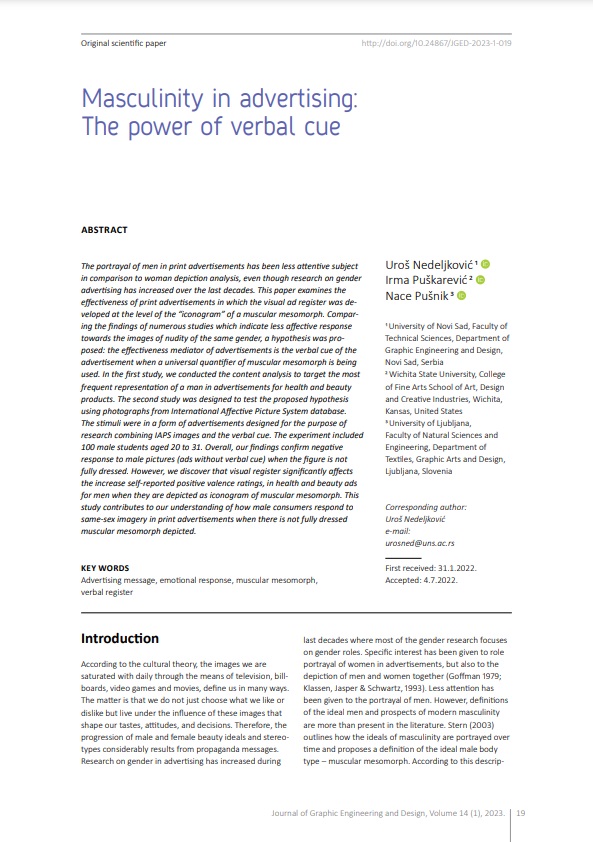
Published 2023-03-01
abstract views: 487 // Full text article (PDF): 566
Keywords
- Advertising message,
- emotional response,
- muscular mesomorph,
- verbal register
How to Cite
Copyright (c) 2023 © 2023 Authors. Published by the University of Novi Sad, Faculty of Technical Sciences, Department of Graphic Engineering and Design. This article is an open access article distributed under the terms and conditions of the Creative Commons Attribution license 3.0 Serbia.

This work is licensed under a Creative Commons Attribution 3.0 Unported License.
Abstract
The portrayal of men in print advertisements has been less attentive subject in comparison to woman depiction analysis, even though research on gender advertising has increased over the last decades. This paper examines the effectiveness of print advertisements in which the visual ad register was developed at the level of the “iconogram” of a muscular mesomorph. Comparing the findings of numerous studies which indicate less affective response towards the images of nudity of the same gender, a hypothesis was proposed: the effectiveness mediator of advertisements is the verbal cue of the advertisement when a universal quantifier of muscular mesomorph is being used. In the first study, we conducted the content analysis to target the most frequent representation of a man in advertisements for health and beauty products. The second study was designed to test the proposed hypothesis using photographs from International Affective Picture System database. The stimuli were in a form of advertisements designed for the purpose of research combining IAPS images and the verbal cue. The experiment included 100 male students aged 20 to 31. Overall, our findings confirm negative response to male pictures (ads without verbal cue) when the figure is not fully dressed. However, we discover that visual register significantly affects the increase self-reported positive valence ratings, in health and beauty ads for men when they are depicted as iconogram of muscular mesomorph. This study contributes to our understanding of how male consumers respond to same-sex imagery in print advertisements when there is not fully dressed muscular mesomorph depicted.
Article history: Received (January 31, 2022); Revised (June 20, 2022); Accepted (July 4, 2022); Published online (March 1, 2023)

